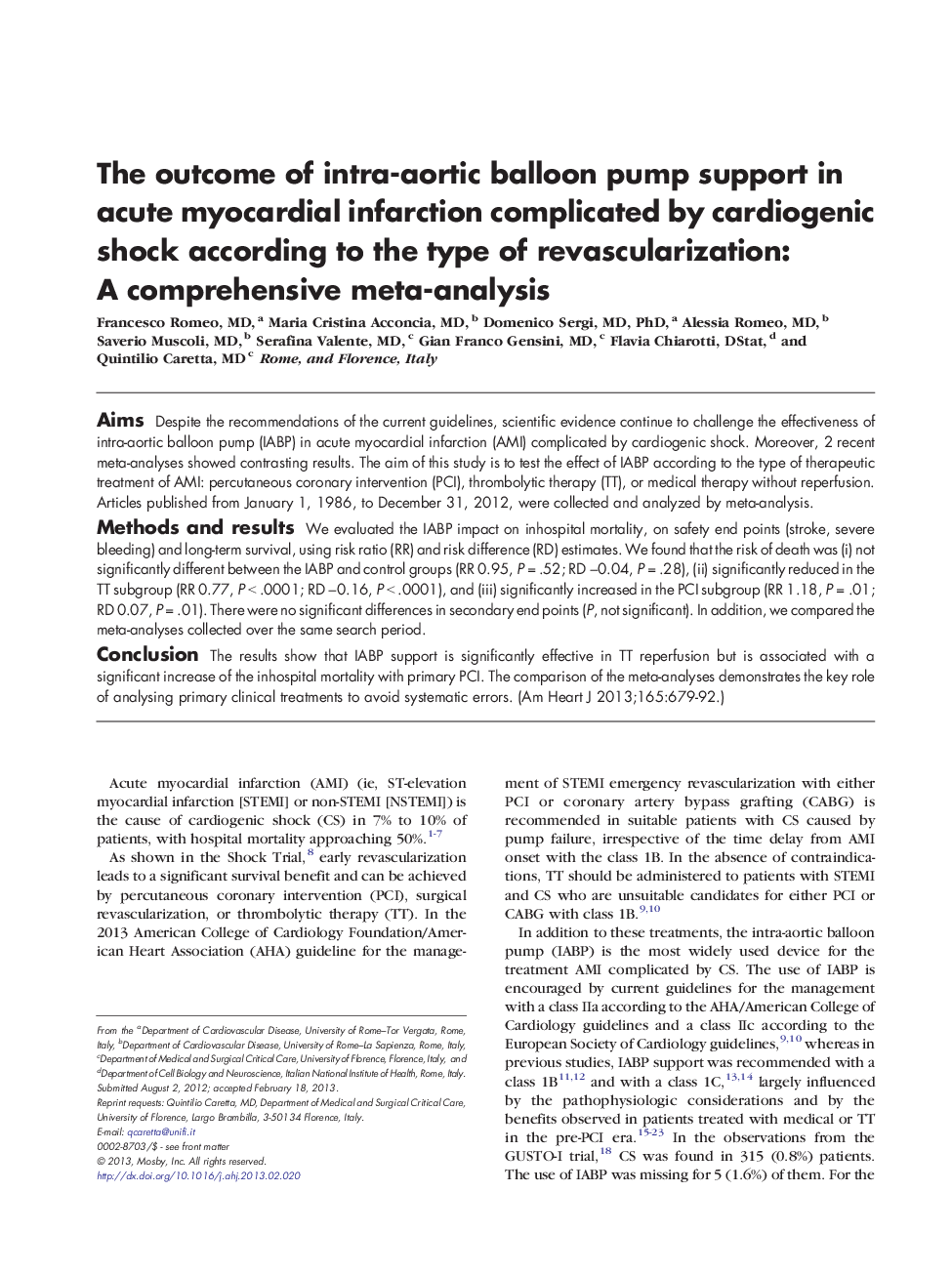| Article ID | Journal | Published Year | Pages | File Type |
|---|---|---|---|---|
| 2849426 | American Heart Journal | 2013 | 14 Pages |
AimsDespite the recommendations of the current guidelines, scientific evidence continue to challenge the effectiveness of intra-aortic balloon pump (IABP) in acute myocardial infarction (AMI) complicated by cardiogenic shock. Moreover, 2 recent meta-analyses showed contrasting results. The aim of this study is to test the effect of IABP according to the type of therapeutic treatment of AMI: percutaneous coronary intervention (PCI), thrombolytic therapy (TT), or medical therapy without reperfusion. Articles published from January 1, 1986, to December 31, 2012, were collected and analyzed by meta-analysis.Methods and resultsWe evaluated the IABP impact on inhospital mortality, on safety end points (stroke, severe bleeding) and long-term survival, using risk ratio (RR) and risk difference (RD) estimates. We found that the risk of death was (i) not significantly different between the IABP and control groups (RR 0.95, P = .52; RD −0.04, P = .28), (ii) significantly reduced in the TT subgroup (RR 0.77, P < .0001; RD −0.16, P < .0001), and (iii) significantly increased in the PCI subgroup (RR 1.18, P = .01; RD 0.07, P = .01). There were no significant differences in secondary end points (P, not significant). In addition, we compared the meta-analyses collected over the same search period.ConclusionThe results show that IABP support is significantly effective in TT reperfusion but is associated with a significant increase of the inhospital mortality with primary PCI. The comparison of the meta-analyses demonstrates the key role of analysing primary clinical treatments to avoid systematic errors.
